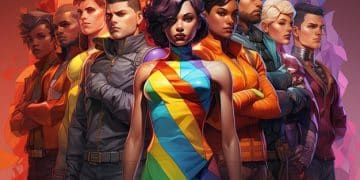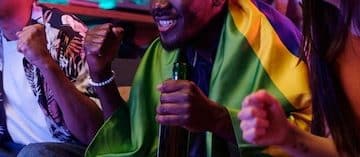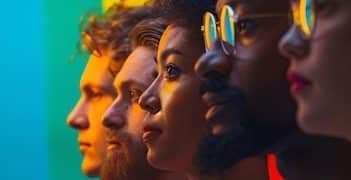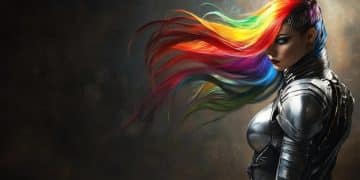LGBT Representation in LoL Esports: EU vs. US Teams

The key differences in LGBT representation in European and US League of Legends esports teams lie in varying cultural attitudes, sponsorship landscapes, and community engagement strategies across both regions.
Understanding the nuances of LGBT representation in European and US League of Legends esports teams is crucial for recognizing the dynamic social landscapes shaping competitive gaming. While both regions strive for inclusivity, their approaches and outcomes present distinct patterns influenced by cultural, economic, and historical factors. This exploration delves into these divergences, providing a comprehensive analysis of the journey toward greater diversity within two of the world’s most prominent esports ecosystems.
Cultural and Societal Influences on Inclusivity
The cultural and societal landscapes of Europe and the United States play a significant role in shaping attitudes toward LGBT representation within esports. Europe, known for its diverse national identities and often more progressive social policies regarding LGBT rights, tends to foster an environment where discussions about inclusivity are more openly embraced. This is not to say that challenges do not exist, but rather that the groundwork for acceptance may be more deeply laid in many European countries.
In contrast, the United States presents a complex tapestry of cultural values. While major urban centers and coastal regions often mirror Europe’s progressive stance, other areas may hold more conservative views, leading to a broader spectrum of opinions on LGBT issues. This regional variation within the US can impact the experience of LGBT individuals in esports, from grassroots communities to professional organizations.
Varying Public Acceptance and Legal Frameworks
Public acceptance of LGBT identities has historically shown distinct trajectories in Europe and the US. Many European nations have long-standing legal protections and social norms that support LGBT individuals, which can translate into a more welcoming environment in esports. These legal frameworks often provide a baseline for non-discrimination, influencing team policies and fan behavior.
- EU Progress: Several European countries were pioneers in legalizing same-sex marriage and anti-discrimination laws, fostering a climate of greater social acceptance.
- US Evolution: The US has seen significant legal advancements, particularly in the last decade, but cultural acceptance remains more varied and subject to ongoing political debate.
- Impact on Players: Players in regions with stronger legal and social backing may feel more empowered to be open about their identities.
The media representation of LGBT individuals also differs, with European media often depicting queer communities in a more integrated and less commodified manner compared to some segments of US media. This difference contributes to the public perception and normalization of LGBT identities, which can directly affect how these conversations unfold within esports organizations.
These cultural underpinnings create different starting points for inclusivity initiatives. European teams might inherit a broader societal predisposition towards diversity, allowing them to focus on deeper integration and support mechanisms. US teams, however, might face a more fragmented public opinion, requiring them to be more proactive and intentional in their efforts to build inclusive spaces and educate their fan bases.
Understanding these distinct backdrops is essential for analyzing the visible differences in LGBT representation. It helps explain why specific initiatives gain traction in one region more easily than another, and why challenges, though universal, manifest in unique ways.
Sponsorship and Commercial Pressures
The financial ecosystems of European and US esports, particularly regarding sponsorship and commercial pressures, also contribute significantly to the landscape of LGBT representation. Sponsorship deals are not merely about funding; they often come with expectations about brand image, audience engagement, and corporate social responsibility. These expectations can subtly (or overtly) influence how teams address diversity and inclusion.
In the US, the market is often driven by large corporate sponsors with extensive corporate social responsibility (CSR) initiatives. These brands may actively seek out partnerships that demonstrate a commitment to diversity, including LGBT inclusivity, as part of their broader branding strategy. This can create an incentive for North American esports organizations to highlight their inclusive practices and actively support LGBT athletes and communities.
European sponsors, while also engaging in CSR, might operate within a slightly different framework influenced by local market dynamics and established social norms. The emphasis might shift depending on the country or region, with some European sponsors being equally keen on diversity, while others might prioritize different aspects of social engagement or brand visibility. This can lead to a less uniform approach to LGBT inclusivity driven by commercial interests across the continent.
Brand Alignment and Audience Demographics
The alignment of esports teams with sponsors often hinges on shared values and target demographics. Brands aiming to reach a younger, more progressive audience may find strong value in partnering with teams that actively promote diversity, including LGBT representation.
- US Market Focus: Major US brands often have extensive diversity and inclusion programs, making explicit LGBT support in esports an attractive partnership.
- European Market Nuances: Sponsorship in Europe can be more fragmented, with local brands influencing national differences in D&I initiatives.
- Commercial Incentives: Teams in both regions are increasingly aware that inclusive branding can open doors to new sponsorship opportunities and expand their fan base.
Furthermore, the audience demographics for League of Legends esports vary subtly between the two regions. While both have a global and diverse fan base, the specific makeup can influence sponsorship decisions. For example, a sponsor targeting a highly progressive demographic might prioritize partnerships that overtly champion LGBT rights. Conversely, a brand with a broader or more conservative audience might prefer a more understated approach to diversity messages.
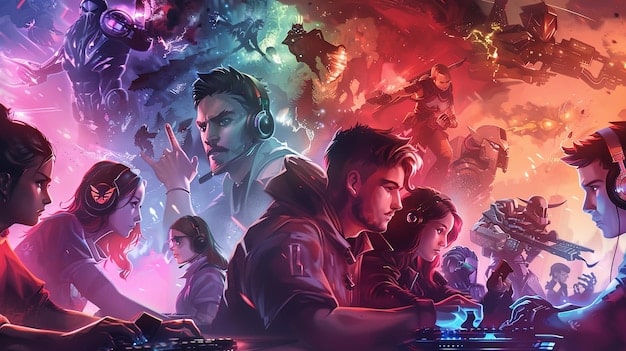
The financial backing from sponsors can provide the resources necessary for teams to implement diversity initiatives, hire D&I specialists, and support LGBT-inclusive events or campaigns. Without this commercial impetus, such efforts might be less prioritized. Therefore, the differences in sponsorship landscapes contribute to the varying levels of formal and visible LGBT representation seen in EU and US League of Legends esports teams.
Player Visibility and Advocacy
The visibility of LGBT players and their advocacy efforts serves as a powerful indicator of representation within esports. While the competitive nature of League of Legends primarily focuses on skill, the personal identities of players and their willingness to be open about their LGBT status can significantly impact community perception and team culture. There’s a notable difference in how player visibility translates into broader advocacy efforts between the European and US scenes.
In the US, highly visible LGBT players often become informal ambassadors, using their platforms to advocate for greater inclusion. This is partly fueled by a media landscape that often champions individual stories of overcoming adversity and expressing identity. These players might participate in panels, interviews, and social media campaigns aimed at raising awareness and fostering a more welcoming environment.
European players, while equally passionate, might engage in advocacy through different channels. The collective identity in Europe can sometimes lead to more team- or league-driven initiatives rather than relying solely on individual athlete advocacy. Moreover, the fragmented nature of European national identities means that advocacy efforts might be tailored more specifically to local contexts and cultural sensitivities.
Role of Organizations and Fan Engagement
Esports organizations themselves play a critical role in fostering an environment where players feel safe and supported to be open about their identities. Teams in both regions have varying levels of commitment to this, often influenced by their internal values and external pressures.
- Team Support Structures: US teams sometimes have more formalized support systems or mental health resources that encourage authenticity.
- Community Activism: European fan bases, often highly localized, can be incredibly vocal in demanding inclusivity from their favorite teams and leagues.
- Social Media Impact: Both regions leverage social media extensively for advocacy, but the tone and reception can differ based on regional cultural norms.
Fan engagement also plays a crucial part. In the US, fan groups and community organizations often actively champion LGBT players and demand greater representation, putting pressure on teams and leagues to respond. This type of fan activism can be highly effective in driving change.
In Europe, while fan engagement is strong, it might manifest in ways that are more integrated with traditional sports fan culture, sometimes less focused on identity politics, but still deeply committed to social equity. The subtle distinctions in these interactions suggest differing pathways for how player visibility translates into genuine progress for LGBT representation in esports.
League and Publisher Initiatives
The governing bodies and game publishers, primarily Riot Games for League of Legends, hold immense power in shaping the esports landscape through their official initiatives and policies. Their approach to LGBT inclusion directly influences how teams, players, and fans interact with these issues. The implementation and emphasis of these initiatives can show variations between the European and North American competitive circuits.
In the US, Riot Games has often been at the forefront of implementing diversity and inclusion initiatives across its various leagues. This includes forming internal diversity councils, partnering with LGBT organizations, and running promotional campaigns during Pride Month. Such efforts set a precedent for teams in the LCS (League of Legends Championship Series) and other North American leagues, encouraging them to adopt similar practices.
In Europe, the LEC (League of Legends European Championship) and regional leagues also engage in diversity efforts, but the messaging and scale might adapt to the continent’s diverse legal and cultural norms. While the overarching goals of Riot Games remain consistent globally, the localized execution in Europe might involve different partnerships or approaches to resonate more effectively with various national audiences.
Policy Enforcement and Educational Programs
The effectiveness of league and publisher initiatives also depends on their enforcement of anti-discrimination policies and the education they provide.
- Anti-Harassment Policies: Both regions have policies against harassment, but their active enforcement and reporting mechanisms can vary.
- Diversity Training: North American leagues sometimes place a stronger emphasis on diversity and sensitivity training for players and staff.
- Community Outreach: European leagues often engage in localized community outreach programs that may include LGBT-specific initiatives.
Educational programs aimed at players, coaches, and staff are particularly important. These programs can help deconstruct biases, promote understanding, and create safer spaces. The extent to which such programs are mandatory and comprehensively implemented can differ, reflecting the distinct regulatory environments and corporate cultures in each region.
Ultimately, the leadership shown by Riot Games and its regional branches determines the baseline for LGBT representation. While both European and North American divisions share a common goal of fostering inclusivity, the pathways they take, the emphasis they place on certain initiatives, and the specific challenges they face in implementation can lead to divergent outcomes in the representation visible to the public.
Challenges and Obstacles to Greater Inclusivity
Despite progress, both European and US League of Legends esports teams face considerable challenges and obstacles in achieving more robust LGBT representation. These hurdles are often rooted in deeply ingrained social attitudes, the inherently competitive nature of esports, and the unique pressures of public scrutiny in online environments. While some challenges are universal, their manifestations can differ regionally.
In the US, one significant challenge is overcoming the “bro culture” sometimes prevalent in gaming communities, which can be resistant to discussions around identity and diversity. This can create an unwelcoming atmosphere that discourages LGBT individuals from participating or being open about their identities. The highly aggressive and often anonymous nature of online interactions also enables homophobic and transphobic rhetoric, making spaces feel unsafe.
European teams, while benefiting from generally more progressive societies, still contend with the issue of visibility. The relatively low number of openly LGBT professional players can make it difficult for aspiring queer gamers to find role models or feel that they belong. Moreover, specific cultural or religious conservative pockets within Europe can still harbor prejudices, complicating inclusion efforts in those areas.
Combating Discrimination and Fostering Safe Spaces
Effectively combating discrimination and ensuring safe participation requires ongoing vigilance and proactive strategies from teams and leagues alike.
- Online Toxicity: Both regions struggle with managing online harassment and hate speech directed at LGBT players and fans.
- Lack of Role Models: The scarcity of openly LGBT professional players in both EU and US scenes limits representation and inspiration.
- Implicit Bias: Unconscious biases in recruitment and team dynamics can unintentionally hinder LGBT individuals’ advancement in esports.
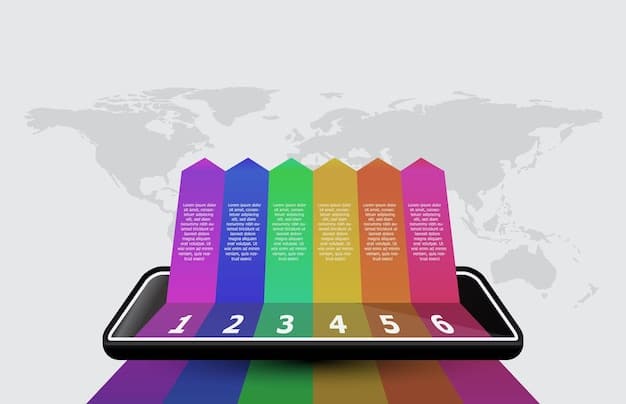
The fear of career repercussions, homophobic backlash from fans, and lack of perceived support from organizations can prevent players from coming out. This self-censorship further exacerbates the problem of underrepresentation, creating a cycle where the absence of visible role models perpetuates a sense of isolation for other LGBT individuals. Organizations in both regions must actively work to break this cycle by demonstrating clear support and protection for their LGBT members.
Addressing these challenges requires a multifaceted approach involving policy changes, educational programs, active community moderation, and visible leadership from both players and organizational management. The path to true inclusivity is ongoing and demands continuous effort to dismantle barriers and build genuinely welcoming environments for all LGBT individuals within League of Legends esports.
Pathways to Future Inclusivity and Representation
Looking ahead, both European and US League of Legends esports teams have distinct pathways and opportunities to enhance LGBT inclusivity and representation. Building on current foundations, these regions can leverage their unique strengths and address specific weaknesses to foster truly welcoming and diverse environments. The goal is not just superficial representation but deep, systemic inclusion that permeates every level of esports.
In the US, a significant pathway involves further formalizing and expanding diversity and inclusion programs within organizations. This includes dedicated D&I staff, comprehensive training for all personnel, and clear, enforced policies against discrimination. Leveraging the strong corporate social responsibility trends in the US market could also lead to more direct sponsorship of LGBT-inclusive initiatives and teams.
For European teams, strengthening grassroots initiatives and fostering national and regional LGBT esports communities could be particularly impactful. Given Europe’s diverse national identities, bottom-up movements resonate deeply. Additionally, cross-border European collaborations on diversity projects could unify efforts and share best practices across different cultural contexts.
Recommended Strategies and Best Practices
Implementing targeted strategies and adopting best practices will be crucial for sustained progress in both regions.
- Mentorship Programs: Establishing mentorships connecting aspiring LGBT gamers with professional players or industry leaders.
- Data Collection: Systematically collecting anonymous data on diversity within teams and organizations to identify gaps and measure progress.
- Inclusive Language: Promoting and enforcing the use of inclusive language across all platforms, from streaming to official communications.
Moreover, active allyship from non-LGBT players, staff, and commentators is paramount. When prominent figures publicly support their LGBT colleagues, it sends a powerful message of acceptance and normalizes inclusivity. This kind of authentic endorsement discourages hostility and encourages a more respectful community culture.
Both regions can also benefit from sharing insights and collaborating on global initiatives. While their approaches may differ, the fundamental goal of creating a safer and more welcoming space for LGBT individuals in esports is universal. By continuously evaluating their efforts, adapting to community feedback, and remaining committed to these values, European and US League of Legends esports can become true leaders in diversity and inclusion within the broader sports and entertainment industries.
The journey towards full LGBT representation is ongoing, marked by both progress and persistent challenges. By understanding the distinct landscapes of European and US League of Legends esports, we can better appreciate the efforts being made and identify future opportunities for growth and meaningful change.
| Key Point | Brief Description |
|---|---|
| 🇪🇺 Cultural Acceptance | Europe often shows broader societal acceptance and stronger legal protections for LGBT rights. |
| 🇺🇸 Sponsor Influence | US teams often benefit from corporate sponsors with strong D&I initiatives. |
| 🌟 Player Visibility | North American players may have more individual advocacy opportunities; Europe leans into collective/team efforts. |
| 🤝 League Initiatives | Riot Games’ global policies adapt to regional cultural nuances, impacting local execution. |
Frequently asked questions about LGBT representation in LoL Esports
There isn’t definitive public data to quantify which region has “more” openly LGBT players. Both regions face challenges with player visibility, but cultural and media differences may influence how players choose to be open about their identities. Both European and US scenes are actively working to encourage a more welcoming environment.
US sponsors often have extensive corporate social responsibility programs, incentivizing teams to highlight diversity, including LGBT inclusivity. European sponsors also engage in CSR, but their approach can be more varied, influenced by national market nuances and local social norms, leading to different levels of commercial push for LGBT representation.
Both European and US LGBT players face online toxicity, potential career repercussions for being open, and a lack of visible role models. In the US, “bro culture” can be an obstacle, while in Europe, localized conservative pockets and lower overall visibility remain challenges. Creating safer spaces is an ongoing effort.
Riot Games and regional league organizers like LEC and LCS implement anti-discrimination policies, educational programs, and community outreach. While global goals for inclusivity are shared, the specific execution and emphasis of these initiatives may adapt to regional cultural and legal contexts, influencing localized efforts.
Future steps include formalizing D&I programs, increasing mentorship opportunities, collecting diversity data, promoting inclusive language, and fostering active allyship. Both regions can strengthen grassroots initiatives and leverage their unique cultural strengths to create more welcoming and diverse environments, ensuring deeper, systemic inclusion.
Conclusion
The journey toward fully inclusive LGBT representation within League of Legends esports is a multifaceted endeavor, reflecting distinct yet interconnected paths in Europe and the United States. While both regions share a commitment to fostering diversity, their approaches are shaped by varying cultural landscapes, commercial pressures, advocacy styles, and the specific initiatives of their respective leagues and publishers. Continued progress hinges on dedicated efforts to formalize inclusion strategies, combat pervasive challenges like online toxicity, and empower both visible and aspiring LGBT individuals within the vibrant esports ecosystem.


